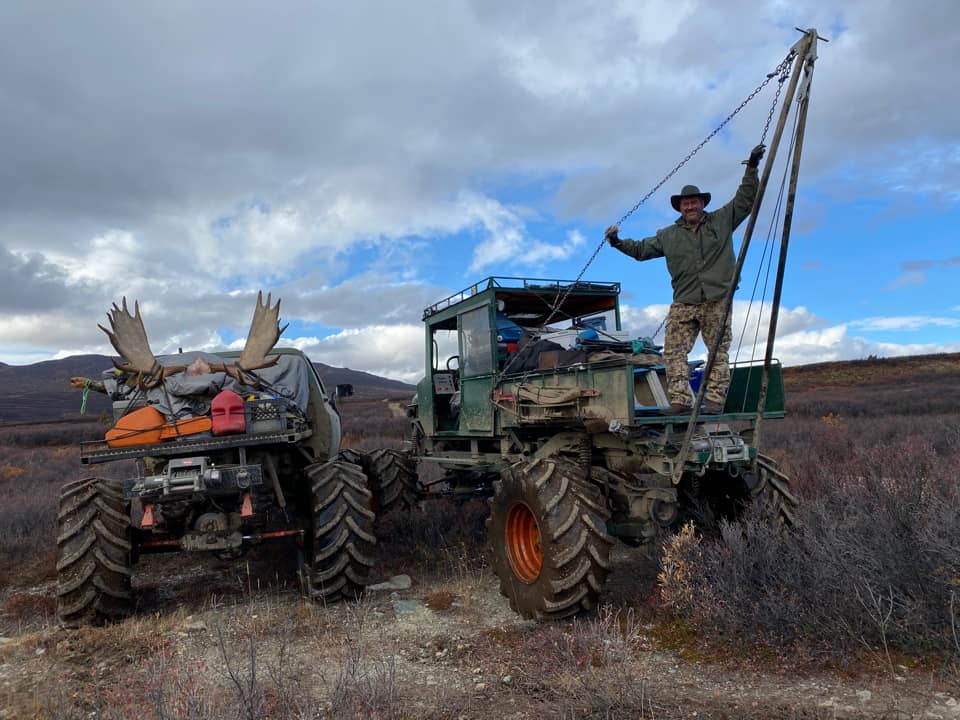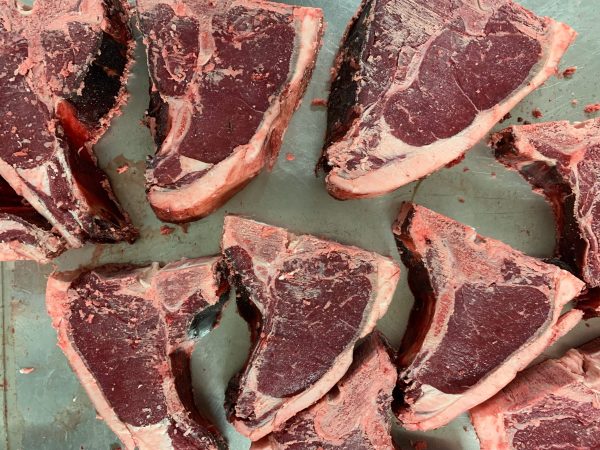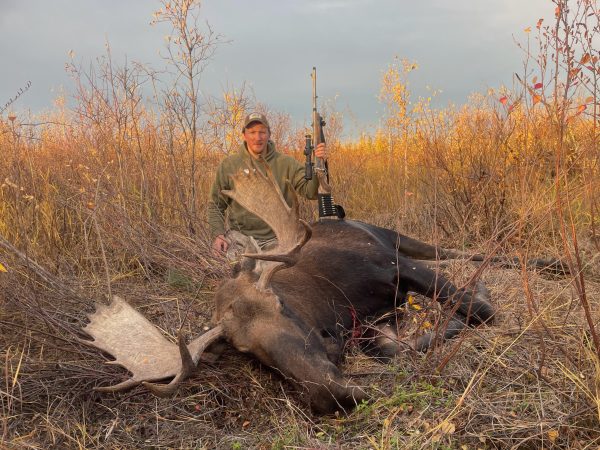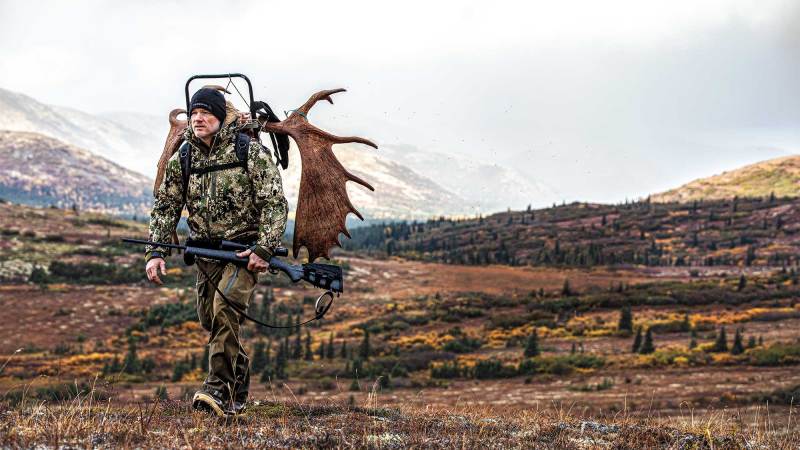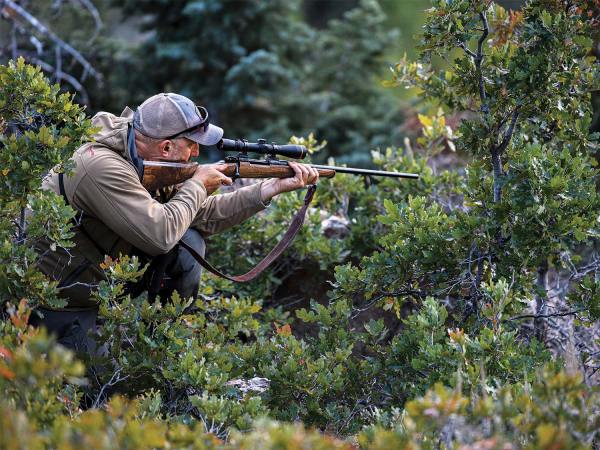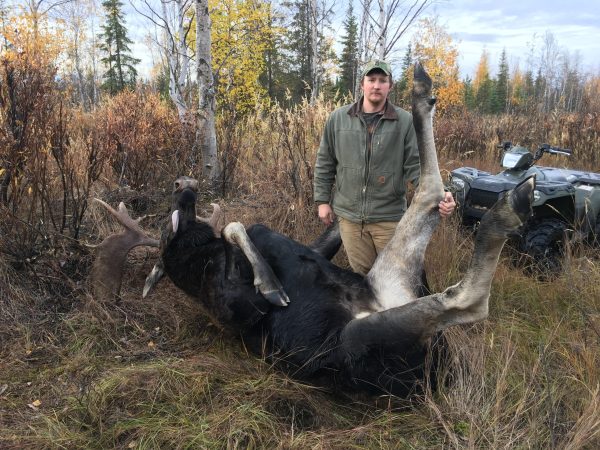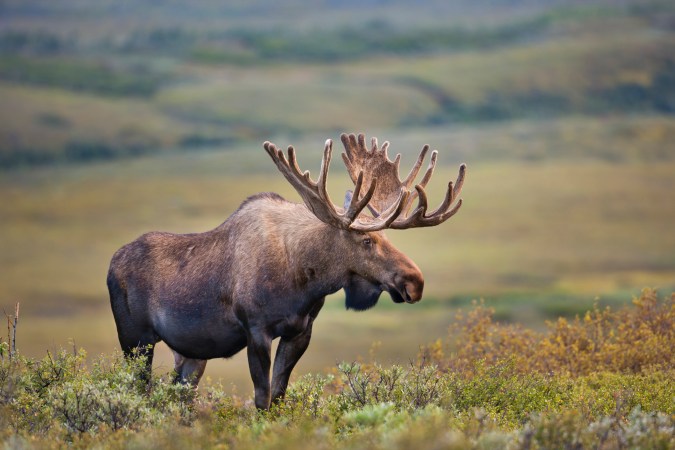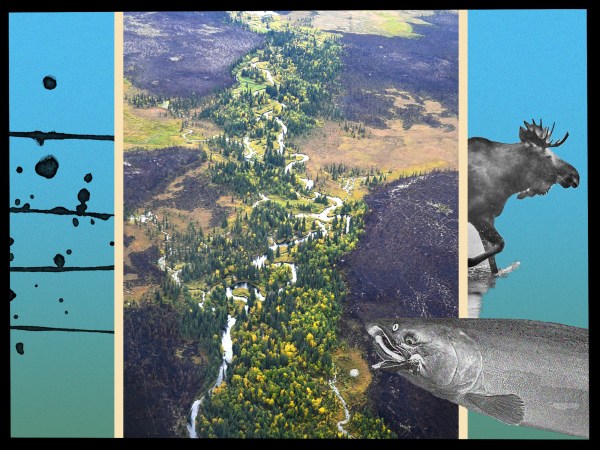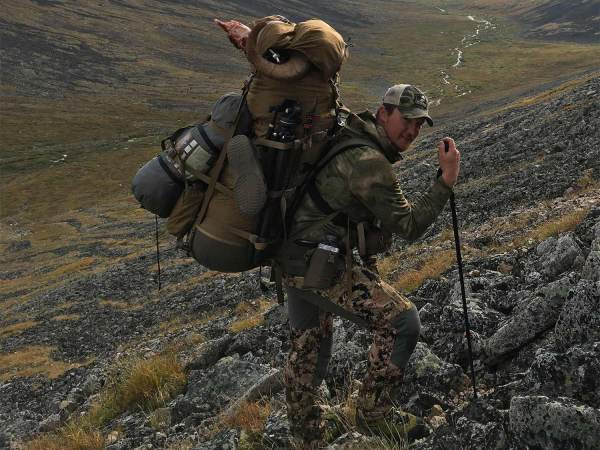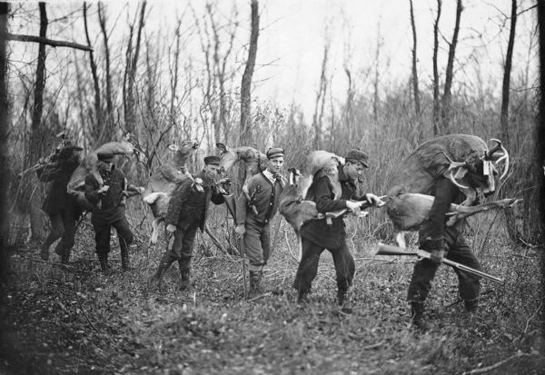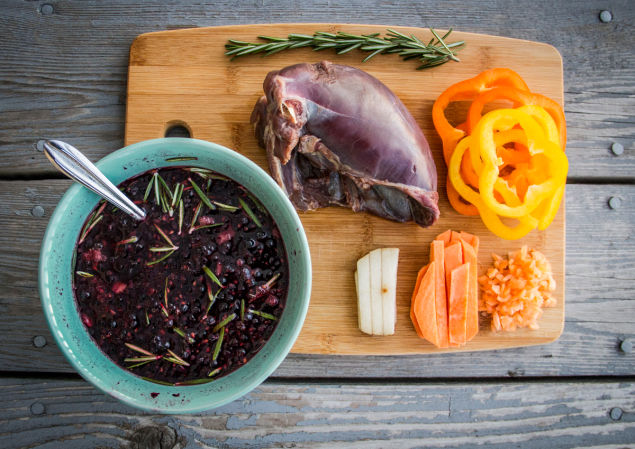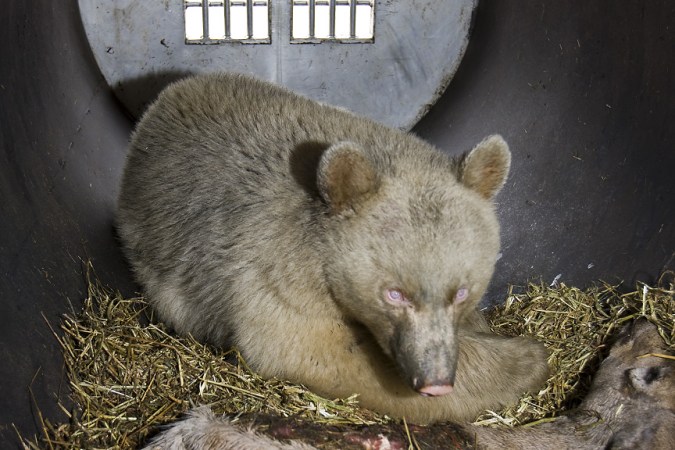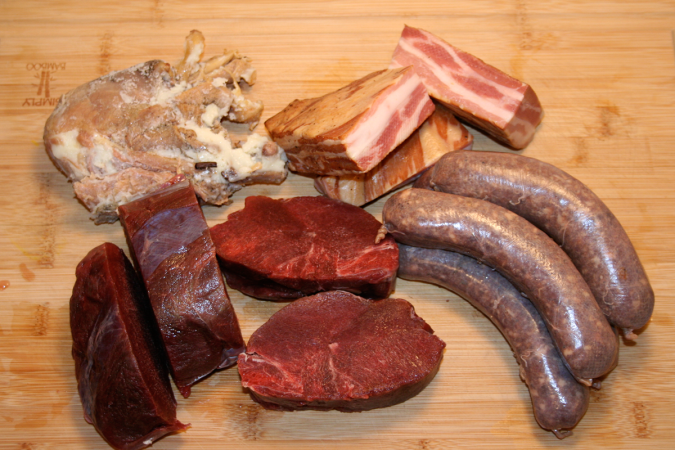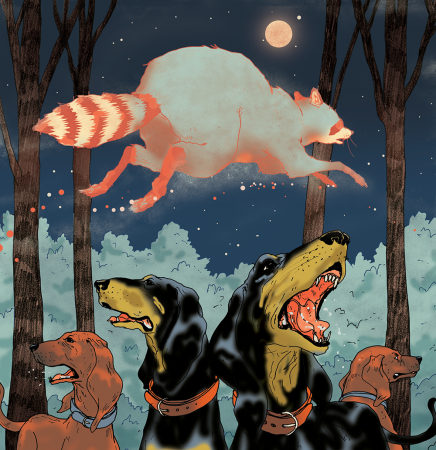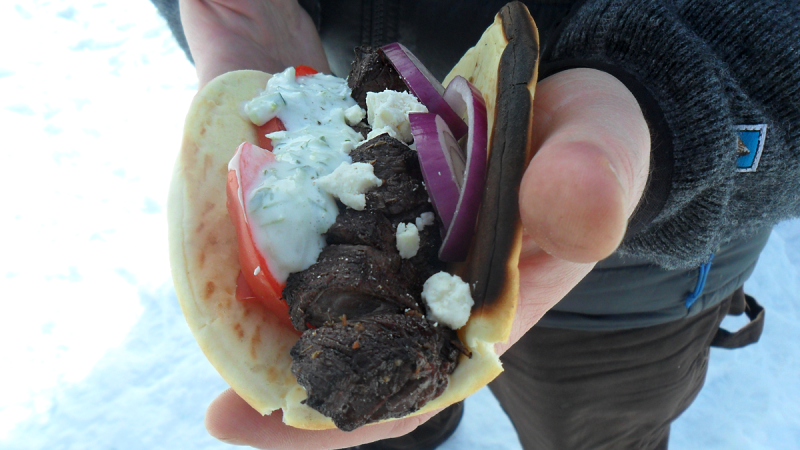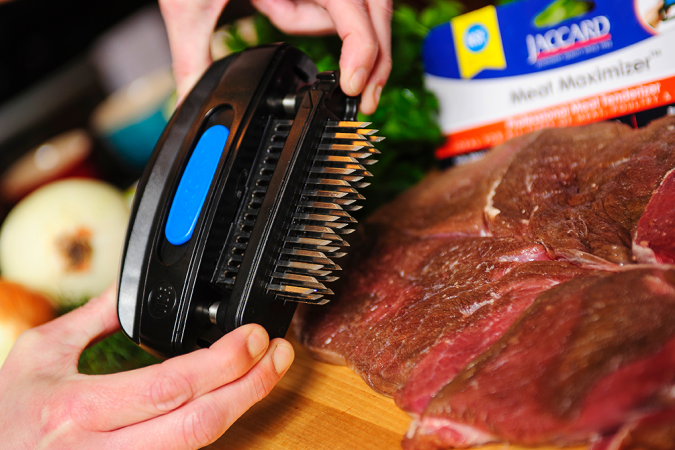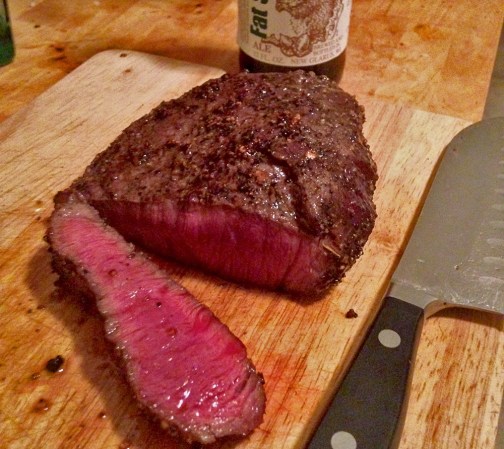We may earn revenue from the products available on this page and participate in affiliate programs. Learn More ›
In Alaska, we take moose hunting seriously. Up here, many families still don’t buy meat from the store and moose meat is an important staple of our daily diet. But Alaska is vast, and getting a moose out of the backcountry can be a ton of work. When you kill a bull, it’s often in a remote area, and the terrain makes access extremely challenging. But that doesn’t dissuade moose hunters. To hunt and fish in Alaska you need a creative mind and some know-how. For decades, folks here have combined their creative and industrial talents to build out their own moose hunting rigs. Although ATVs and UTVs are more capable than ever, some hunters go the extra mile to engineer machines that perfectly fit their needs.
Sometimes it’s a specialized boat build, a few modifications to an ATV or UTV, or a completely custom-built “moose buggy.” Each hunter has their own way of making their equipment suitable for moose country. For example, I will haul an ATV, canoe, and meat trailer by boat. Then pull the meat trailer and canoe with the ATV out to moose camp, and use the canoe to get to a bull in the water or help pull the meat through swampy areas.
Some folks have gone next level with their moose buggie builds. Here are the best moose meat rigs I’ve come across here in Alaska.
Big Rigs Leave a Small Footprint
Before I get started, it’s worth noting that although some of these setups look like they would be extremely destructive to the areas we are hunting, many of them actually have a light footprint. Displacing the weight of your rig not only helps minimize damage to the environment, it allows you to travel more easily in soft, boggy terrain. There are places where some of these machines can be used legally, and plenty of areas they cannot. So before you decide to duplicate one, make sure the location you hunt allows for such a vehicle.
1. Carl Hiers: Can-Am Defender 6×6
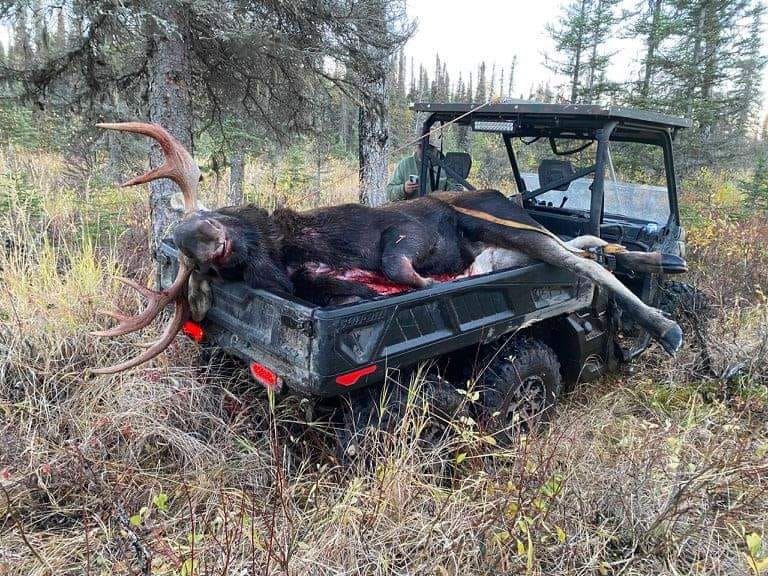
You’ll see plenty of stock ATVs and UTVs packing moose meat each season, but there are also some pretty ingenious ways that folks fabricate aftermarket modifications to make their machines more effective. The Can-Am Defender 6×6 is a popular starting platform The owner modified this one with an XMR bumper and ran notched square tubing from the bumper up to the roof. He then fitted two boat trailer rollers to the top of the roof so that with his front winch, he can pass the cable through the tubing and back over the rollers to pull a bull moose whole into the bed. The tilting bed and a piece of plywood make it a snap to load big bulls whole so they can be winched up, skinned, and kept perfectly clean at camp.
READ NEXT: How Big Is a Moose?
2. Joshua Mark Miller: Can-Am Defender 6×6
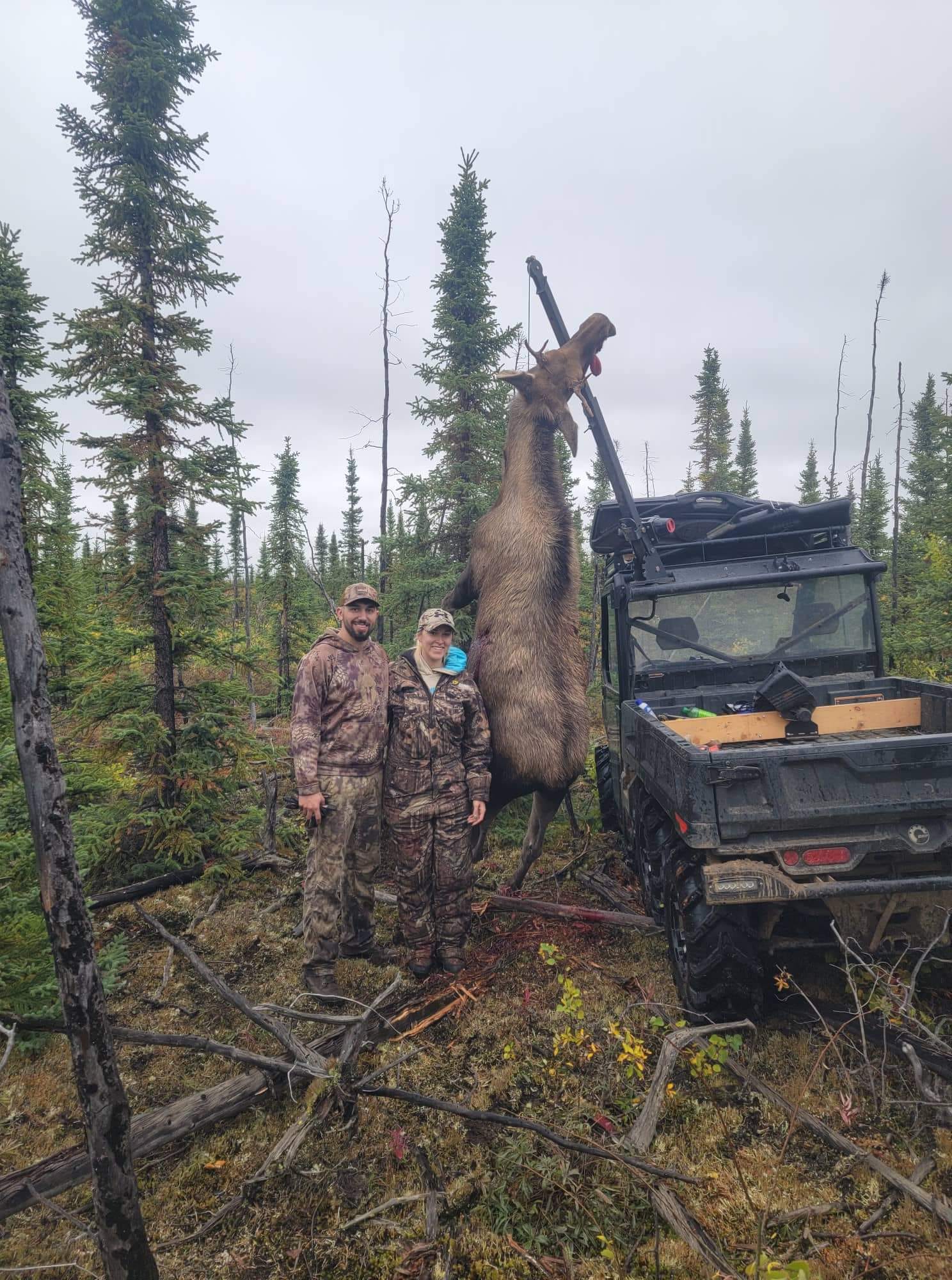
Another customized Defender 6×6, Miller took a different approach. He had a custom-fabricated crane built to lift from the side, using a 2,500-pound winch. Even when if he’s not loading a whole moose, it’s extremely useful for both skinning and getting heavy pieces into the bed.
3. Austin McPherson: Mudd-Ox XL
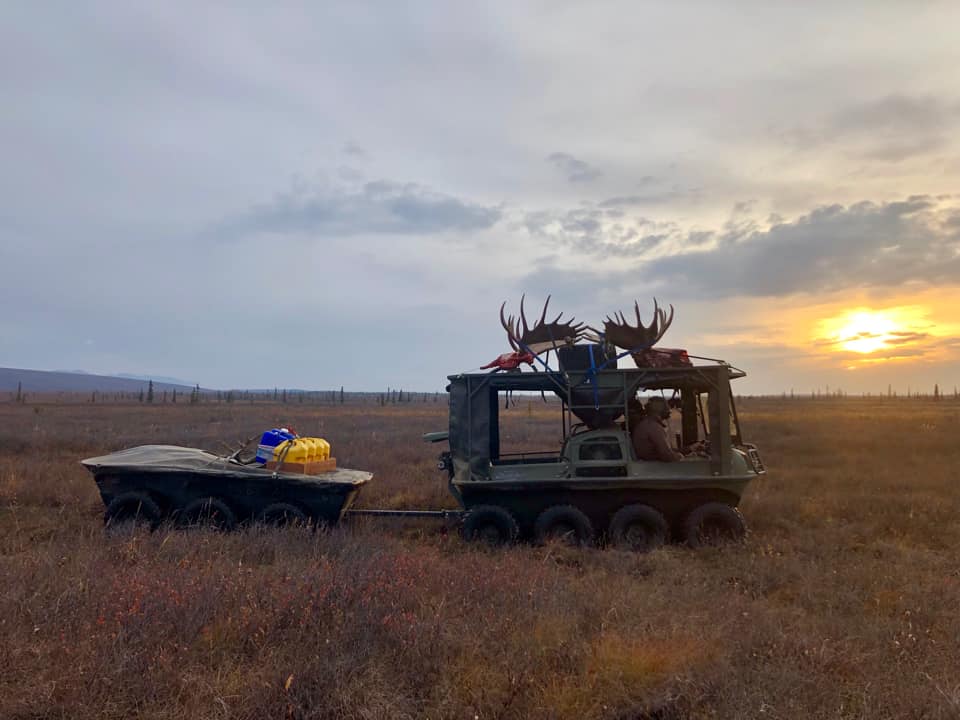
Vehicles like the Mudd-Ox and Argo are very popular among moose hunters for their ability to go almost anywhere, including water. This eight-wheel Mudd-Ox XL with a winch-powered crane, towing a six-wheel meat trailer is probably about as good as it gets for a low ground-pressure rig, and can tackle just about any bog imaginable.
4. Chris Hartman: 1946 M-29c Weasel
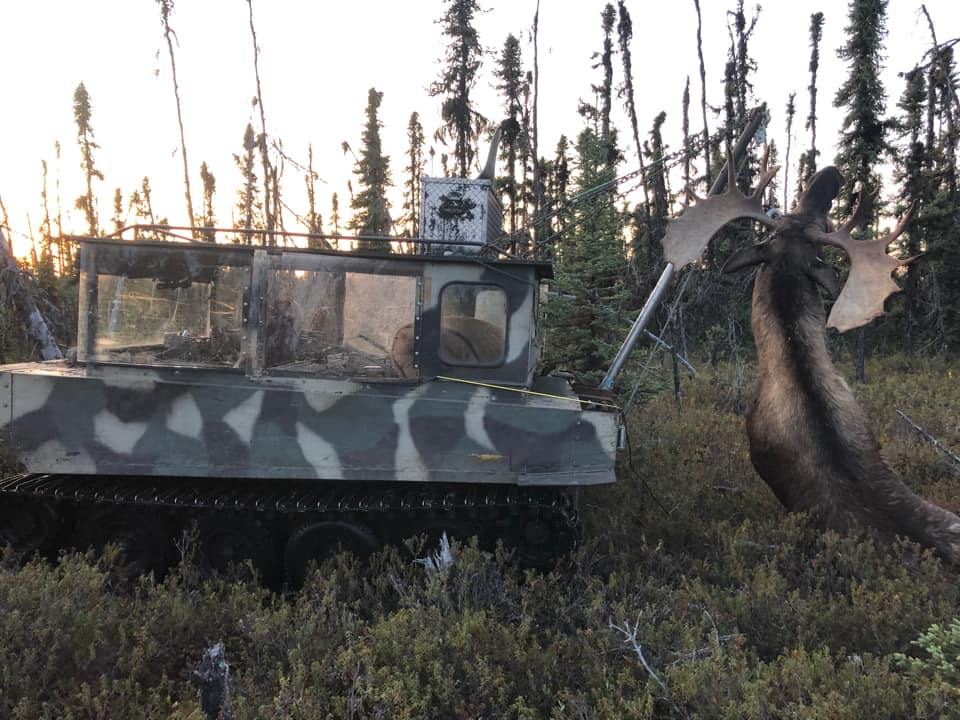
Multi-wheeled or track rigs are nothing new, and moose hunters have long-realized their potential for accessing moose country. There’s no doubt that this 1946 Weasel track rig has seen its fair share of moose seasons. It’s been highly customized over the years, modified with a Ford 170 inline motor and modified transmission. It has seats from a 1991 Dodge Charger, and the custom jammer pole and winch on the back were added as well. It’s only semi-amphibious, but can drive through swamp you can’t walk on, with less than 2 pounds per square foot, and only burns about 20 gallons of gas per season.
5. Jeffrey Smith: Ardco Tractor
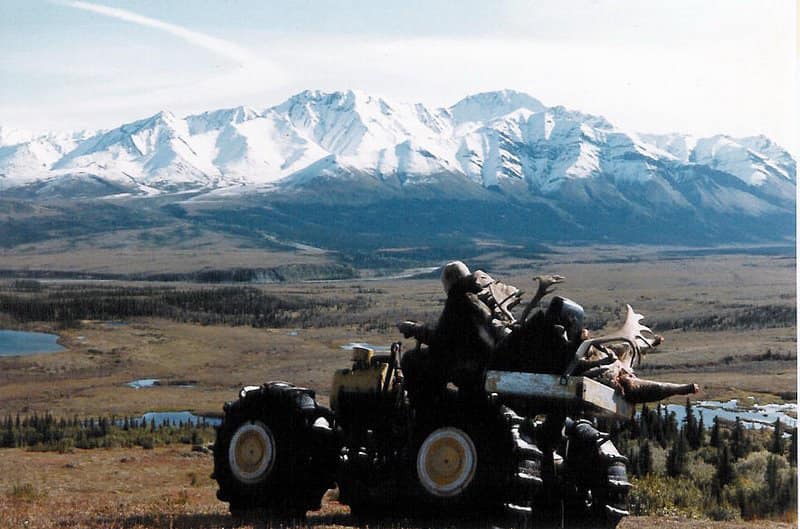
These hunters were using an Ardco Tractor for moose and caribou hunting in the 1980s and 90’s. Although it looks more like a monster four-wheeler than a tractor, it was another early low-pressure machine that could motor across the tundra with ease and even haul a whole moose in a single load.
6. Mark Barnes: Custom Whitewater Marine Jet Boat
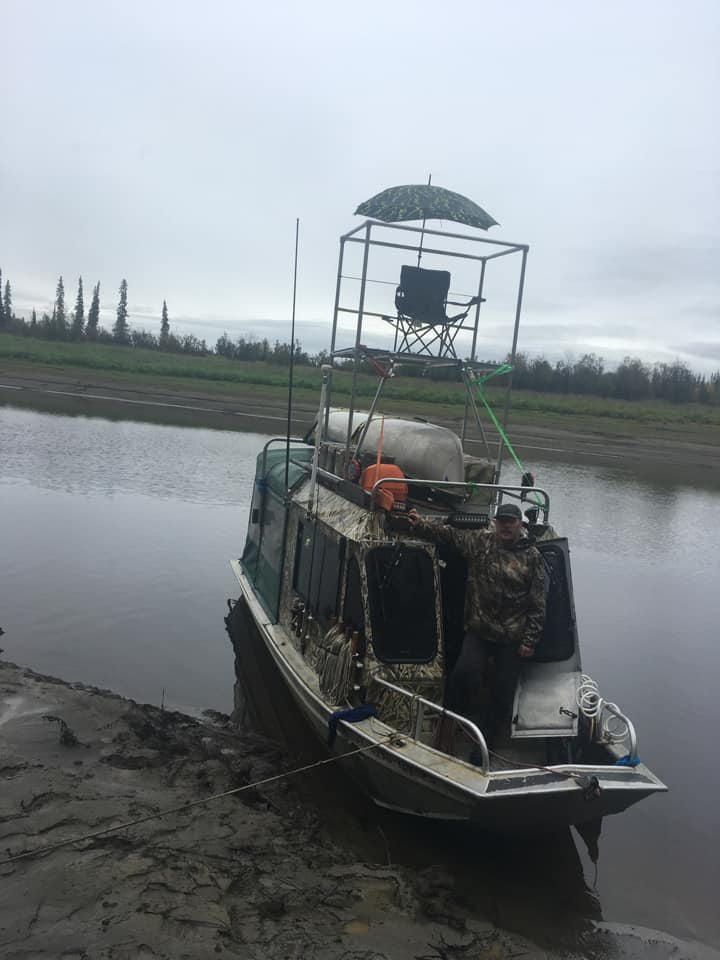
There is plenty of moose country that is best accessed by river. This boat was built by Whitewater Marine in 1980 and its owner has been improving it over the last four decades. It’s powered by a 351 Ford motor, and a Kodiak 3-stage Jet, with a 15-horsepower Honda for slowly cruising back sloughs. It’s designed for spending lots of time on the big river systems, with a fully-enclosed cab, and a sitting tower to help a hunter see over the tall banks while putting down back waterways.
7. Bill Booth: Custom Flat-Bottom Jet Boat
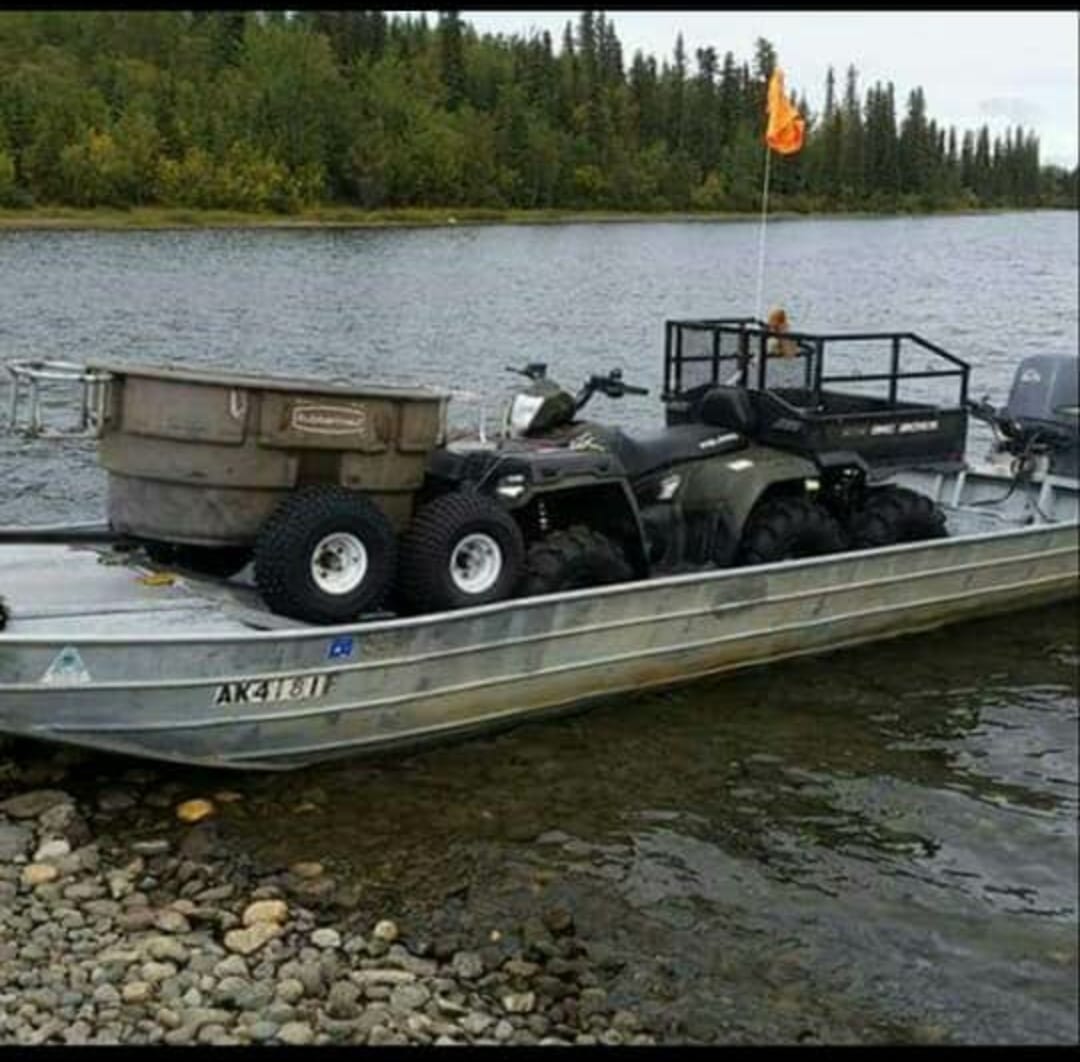
River moose hunters have varying needs, and sometimes the ideal boat requires a minimal approach to serve its purpose. This boat, built by Greatland Welding is 20 feet long, but is a whopping 6 feet wide. What looks like a plain boat is built for hauling freight and equipment. Rather than taking up space with a steering console or cab, the owner went with a 65-horsepower jet with tiller steering. This allows him to haul his 6 wheeler, meat trailer, gear, and an entire moose. This would be a chore for many 20-foot boats, but at 6 feet wide, and the included ribbed trim tabs, it has plenty of surface area to pop up on-step. When it’s not hauling, it has several seats that can be easily installed in the hull.
8. Derrick Moffit: Custom Buggy
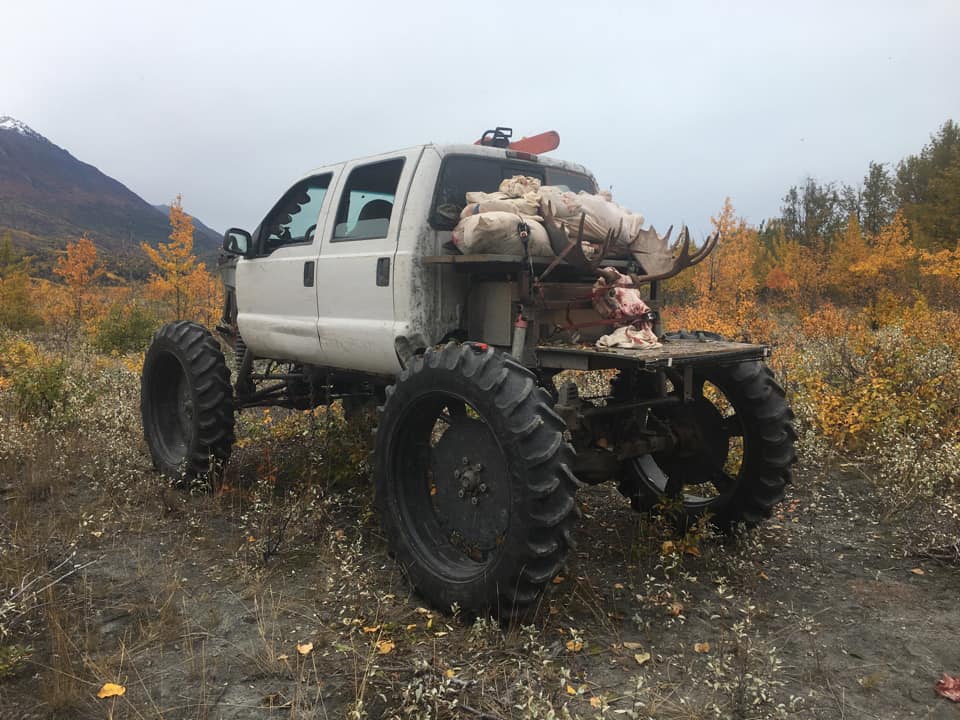
At the peak of ingenuity and willpower are what we call the “moose buggies.” There’s not really another way to classify them because they are almost entirely custom vehicles. They are off-road vehicles, but their purpose isn’t to mud bog and destroy, but to transport hunters, gear, and meat. This one features a 1999 Ford Super Duty cab, but everything beyond that is pure creativity. It has a 2.5-ton Rockwell’s welded front and rear, fully hydro steering, and 60 x 12.5-foot agricultural tires. It’s powered by a fuel-injected Ford 300 6-cylinder, and a C6 transmission with dual transfer cases.
9. Sean Rasmussen: Suzuki Samurai
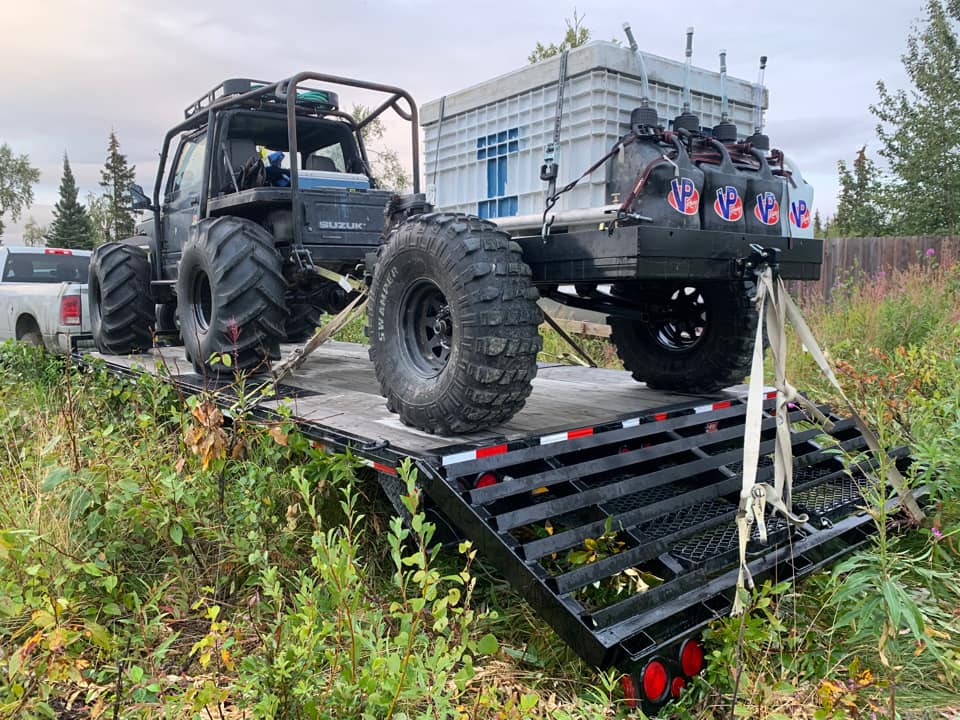
A pair of buggies, one built off of a Toyota, and the other off a Suzuki Samurai serve these hunters well. The Suzuki is under 3,000 pounds with a very light footprint and averages about 1 mile-per-hour in the floating bogs that are common in moose country. Custom gear reduction allows for this crawling pace and the tires to slowly roll over terrain that a person would sink up to their waist in. Rasmussen also made a custom crane from aluminum pipe, which is anchored to the roll cage frame for additional support with heavy-duty ratchet straps. The vehicle is light enough that it can’t lift a whole moose off the ground without tipping, but is perfect for lifting quarters to work on.
Read Next: How to Build the Ultimate Hunting Truck
Jesse Huffman: Monster Truck Rigs
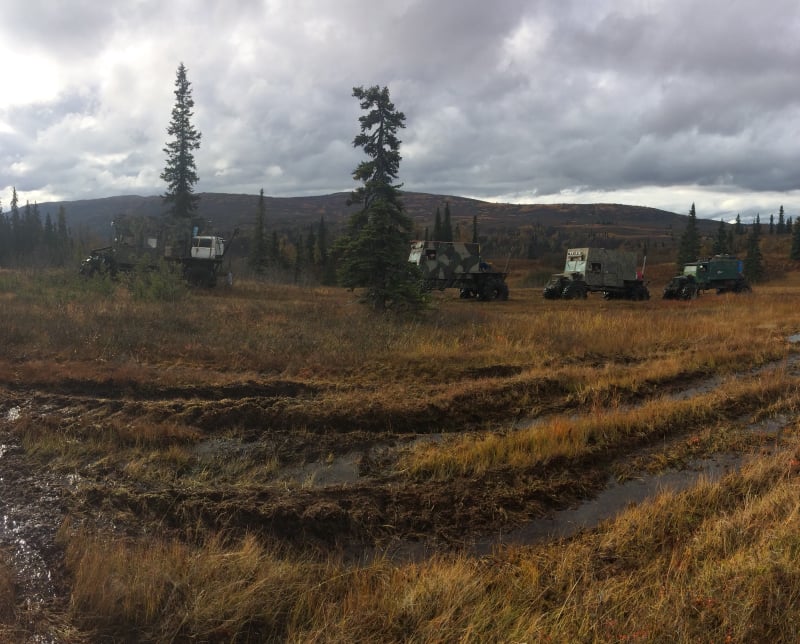
This hunter’s father and grandfather were building custom buggies back in the 1980s, and they own a full fabrication shop which has allowed them to build a fleet of custom go-anywhere moose rigs. Their current setups are built on old military deuce-and-a-half running gears with small-block Ford motors, custom axles, and differentials. They use the same drive shafts that the Monster Jam trucks use and 26I-R22 rice and cane tractor tires on custom-built wheels with spokes and outer rings. Everything except mechanical parts are made by them right in their shop. These rigs allow them to get over 40 miles off the road system and away from other hunters. They bring enough food to feed 10 to 12 people for two weeks or more, a huge basecamp tent, cook stations, generators, and freezers, as well as everything they need to cut, wrap, and freeze all their meat before they ever leave the field.

